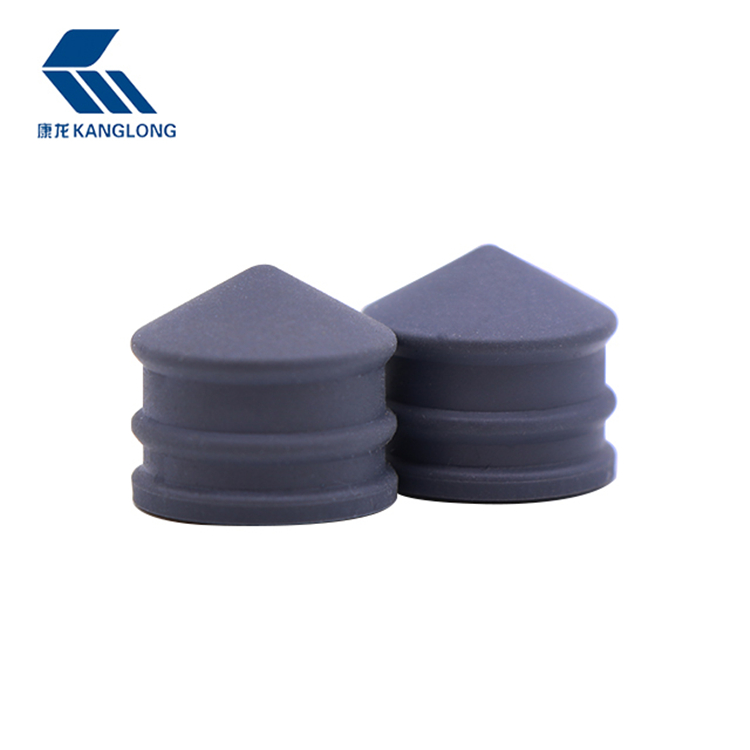Butyl rubber stoppers are a crucial component in various industries, particularly in the pharmaceutical, food, and beverage sectors. These stoppers are widely used for sealing containers, such as vials, bottles, and syringes, to maintain the integrity and safety of the contents. Their effectiveness in sealing is largely due to the unique composition of butyl rubber, a synthetic elastomer known for its impermeability and resistance to chemicals.

The properties of butyl rubber are heavily influenced by the ratio of isobutene to isoprene used during its synthesis. This polymer's molecular structure consists of long chains with a high degree of saturation, which contributes to its durability, low permeability, and overall resilience. The composition of butyl rubber makes it highly resistant to aging, ozone degradation, and temperatures, which are essential qualities for any sealing material used in pharmaceutical and food applications.
The composition of butyl rubber stoppers can be broken down into several essential elements, each of which plays a critical role in ensuring the stopper performs. These components typically include the base polymer (butyl rubber), curing agents, stabilizers, and fillers.
The core of any butyl rubber stopper is the butyl rubber polymer itself. As previously mentioned, butyl rubber is made by polymerizing isobutene with a small amount of isoprene. The specific grade of butyl rubber used for stoppers is often chosen for its high level of purity and low levels of residual impurities. This ensures that the rubber will not react with the contents of the container it is sealing, especially in pharmaceutical or food-related applications.
The polymer itself is generally flexible and elastic, allowing it to conform tightly to the container's opening, creating a secure seal. The rubber's impermeability to gases and liquids helps prevent the leakage of volatile substances and protects the contents from external contaminants, such as bacteria or moisture.
Curing agents, also known as vulcanizing agents, are chemicals that initiate the crosslinking of the polymer chains in butyl rubber. This process, known as vulcanization, enhances the rubber's strength, elasticity, and resistance to wear and tear. The common curing agents for butyl rubber include sulfur, peroxides, and resins.
During vulcanization, the sulfur or peroxide molecules form bridges between the individual polymer chains, creating a three-dimensional network that makes the rubber more durable. The degree of crosslinking can be adjusted depending on the desired hardness and flexibility of the final product. For stoppers, a moderate degree of crosslinking is often preferred, as it ensures the stopper remains flexible enough to compress and form a seal without becoming too rigid.
Butyl rubber is prone to degradation when exposed to heat, light, and oxygen, which can a loss of its desirable properties over time. To combat this, stabilizers and antioxidants are added to the rubber mix during production. These additives help extend the life of the butyl rubber stopper by protecting it from oxidation and preventing the breakdown of its molecular structure.
Common stabilizers include chemical antioxidants, which slow the aging process by neutralizing free radicals that are generated when the rubber is exposed to light or heat. UV stabilizers may also be added to protect the rubber from ultraviolet radiation, which can cause brittleness or discoloration.
Fillers are often included in the composition of butyl rubber to modify its physical properties, such as its density, tensile strength, and hardness. In the case of butyl rubber stoppers, fillers can also help lower the cost of production without compromising the quality of the final product. Common fillers include carbon black, clay, silica, and various resins.
Carbon black is one of the commonly used fillers in rubber products due to its ability to reinforce the material and enhance its durability. It also contributes to the rubber's resistance to wear and tear. Silica may also be used to improve the rubber's mechanical properties, particularly its tensile strength and tear resistance.


 English
English Español
Español


.jpg?imageView2/2/w/500/h/500/format/jpg/q/100)






